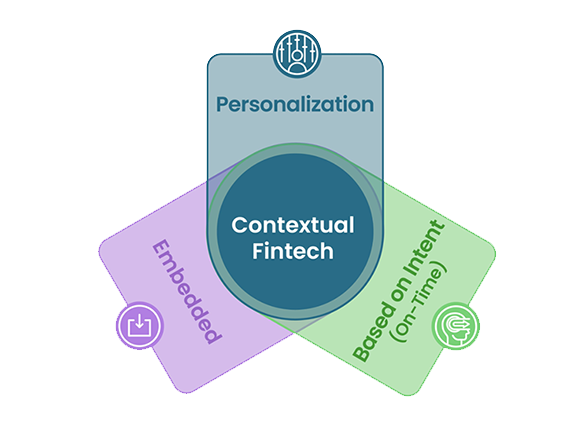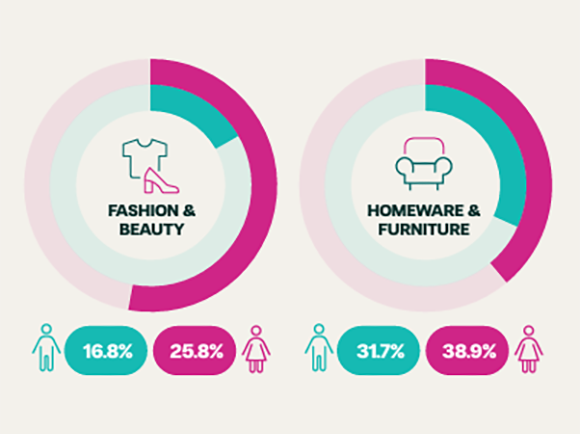Here’s why checkout finance could overtake credit cards

It’s a question that comes up now and again and one that is often dismissed outright. But whether checkout finance will overtake credit cards deserves serious thought. Particularly as it’s been the fastest growing payment method of recent years.
For a start, they both give consumers the ability to buy something now and pay for it over time. They both cost merchants a small fee to use. And they are both cashless payment methods.
Yet one costs consumers interest, while the other is (often) free to use. One is trusted by older generations, while the other is rapidly growing among young consumers. And one offers little benefit to merchants over and above debit cards, while the other significantly boosts average order values, conversions and repeat spend.
From this alone, we start to build a picture and understand why checkout finance has grown so rapidly. The global BNPL market is projected to reach $90.51 billion by 2029, up from $22.86 billion in 2022, and will account for 6% of global e-commerce transactions by 2026 (up from 5% in 2022). For comparison, the credit card industry anticipates a CAGR of 8.7% in the same period and will represent 15% of e-commerce transactions in 2026 (down from 20%).
Now, credit cards are not going anywhere anytime soon, but they are being challenged. Here are a few reasons why that is.
Checkout finance gives consumers flexibility
Let’s say it’s the middle of winter and your boiler breaks. Or your washing machine. Or your fridge. Or maybe you’ve just bought an expensive electric vehicle only to find that you need to install a home charging unit. Or, it’s the beginning of term, and you need new school uniforms for your kids. Or a laptop. Or a tablet. Or sports equipment. The list goes on.
Your options are:
- Use savings (if you are lucky enough to have any)
- Get a loan using a credit card, or another form of personal finance
- Use checkout finance
Most people do not have enough saved to pay for emergencies. In fact, around 3% of the UK could afford a replacement boiler if theirs were to break. Making an unexpected significant purchase with savings is thus out of the question for the vast majority of people.
Getting a ‘traditional’ loan is another option. However, credit cards, personal loans and overdrafts charge consumers interest. Should consumers be penalised with expensive interest for purchases outside of their control? It seems unfair in this circumstance.
Checkout finance, the third and final choice, appears to be the optimal choice. Easy to access, flexible, and free for the consumer (unless a payment is missed), it is ideal for emergencies and offers a lifeline in these situations (which is interesting, given the reputation of some Buy Now, Pay Later firms).
This is not to say that checkout finance is perfect – there are obvious regulatory concerns with BNPL. But these do not apply to the wider checkout finance market, who uphold strict lending standards.
New tools like Divido’s Finance Matcher give consumers a ‘second chance’ at their checkout finance application if they don’t quite fit the initial lending criteria. Instead of being declined outright, this innovative product uses advanced soft-search to create a list of finance plans based on each customer’s affordability.
Finance Matcher shows the customer that, while they may not be able to afford the plan they applied for, they will be accepted for other agreements if they adjust the deposit or term length to reduce their monthly repayments.
Crucially, customers are offered plans they can afford, so there is no additional risk. Merchants benefit from a boost in their accept rates, more sales and happier customers. And the lender originates more loans. A win-win-win.
Checkout finance is the second most popular form of consumer finance in Europe
It is therefore easy to see why checkout finance is the second most popular form of finance in Europe. That’s according to a survey by Divido conducted earlier this year.
We asked nearly 2,000 UK consumers to consider how likely they were to use a range of payment methods for an online purchase of £1,000 or more. The options were: a credit card, checkout finance, personal savings, an overdraft, personal loan, payday loan or borrowing from friends or family.
In first place was personal savings, with nearly two-thirds of consumers opting for it. Credit cards took second place with six in ten consumers likely to use them. And in third was checkout finance, with half of UK consumers likely to use it. The rest trailed behind (payday loan was last, close to borrowing from friends and family).
We then repeated this study with 4,000 additional consumers across four other major European markets – France, Spain, Italy and Germany – and found similar results. Respondents in France prefer checkout finance for an online purchase of €1,000 or more, while Spanish and German consumers appear relatively indifferent. Italians were the least likely to use it.
Based on this, it’s fair to say that more than half of the consumers we surveyed would consider using checkout finance for a significant online purchase, with credit cards the only form of consumer finance more likely to be used. Checkout finance is second only to credit cards as a form of consumer finance and is considerably further ahead of the competition (regarding sentiment).
But why does this matter?
Consumers spend a lot more with credit cards than checkout finance. Credit cards have rewards and benefits, an established infrastructure, consumer protections and the ability to build credit. The credit card market is massive in comparison, and it’s still growing at a considerable rate. Who cares how people feel about checkout finance when we can look at how much they’re actually spending with it?
The point is this: it’s not necessarily about where checkout finance is today, but where it’s going.
Consumers trust checkout finance
Our research has found that of those who have used checkout finance in the past three years, nearly all would use it again (95%). Eight in ten feel comfortable using it as a payment method, and eight in ten also believe it can help manage their finances better. In other words, consumers like it, trust it and use it as a budgeting tool.
Young consumers prefer checkout finance to credit cards, while older consumers interact with this type of credit too. We’ve found that people from every generation, income group and profession interact with checkout finance.
Yet those who have not purchased in the last three years using checkout finance feel very differently. Two-thirds would choose savings to make a significant purchase, over half (55.2%) would use a credit card, while not even a fifth (18.8%) would choose checkout finance. And just over a third (36.6%) would be open to using checkout finance in the next twelve months. They’re also less comfortable using it (only 19.9% are) and less likely to think it can help manage their finances (28.2%). And they’re also most likely to be 65 and over.
There is a gap that will close between those who have used checkout finance and those who have not. As the checkout finance market grows, as more people interact with this type of credit and more young people enter the workforce, it will become stickier. Once a person uses checkout finance, they are almost certainly open to using it again, regardless of age, income or any other demographic. Consumers will likely spend more with checkout finance in future.
Will checkout finance overtake credit cards?
To answer the question: it’s complicated. Just because checkout finance is popular does not mean people will stop using credit cards. They’ll likely be used in conjunction with one another. Credit cards for everyday purchases and checkout finance for the bigger ones, for example.
Credit card infrastructure is ubiquitous in the Western world and offers benefits to consumers that checkout finance cannot (yet) match. Checkout finance is catching up (around three-quarters of large retailers in the UK have at least one checkout finance solution) but is still far from close. Nevertheless, it is a point worth considering.
The lines may begin to blur between the two. Checkout finance is becoming widespread. It will be regulated in many parts of the world soon which means consumer purchases will likely be as protected as they are with credit cards. Buy Now, Pay Later firms are also beginning to report to Credit Reference Agencies, which will provide the ability to build credit.
What will happen remains to be seen. But there is no doubt that checkout finance will continue to grow. Whether it overtakes credit cards is anyone’s guess.
Tell me more
Become an expert in checkout finance
Our latest research uncovers the shopping habits of 4,000 consumers across Europe’s biggest markets. Learn how shoppers in France, Spain, Italy and Germany use checkout finance, where they spend their money, and how likely they are to use it again.
You might also
be interested in
Keen to know more?








